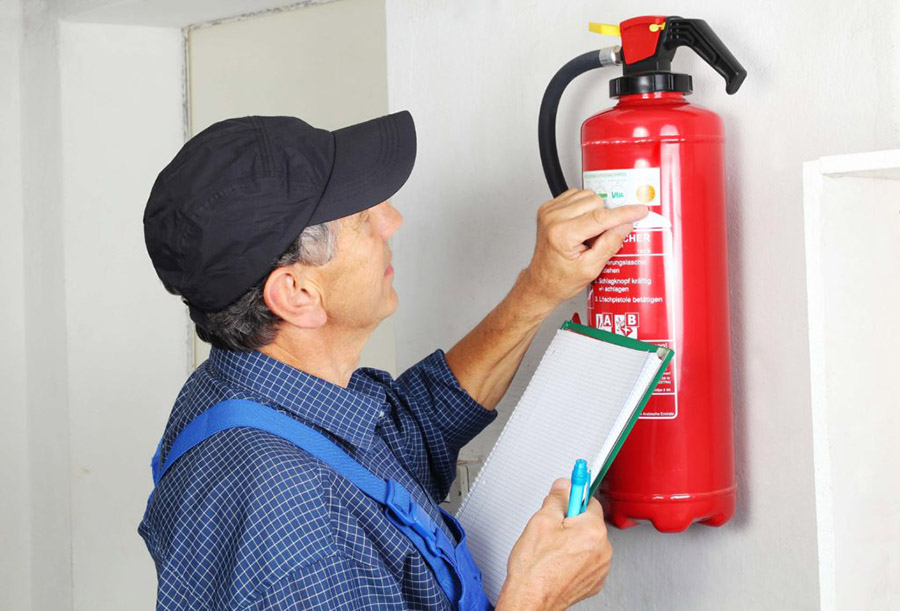When it comes to fire safety, fire extinguishers can be a valuable tool. But if you’ve had an extinguisher sitting under the kitchen sink for 15 years, it might be time to purchase a new one. Chances are, the one you’ve got won’t work if and when you need it.
Here are a few fire extinguisher maintenance tips and recommendations that will help you be better prepared to use this fire safety tool.
There are five primary types of fire extinguishers each designed to put out a specific kind of fire.
- A – for use with household materials such as cloth, wood, and paper
- B – for a fire fueled by combustible and flammable liquids (gasoline, oil, grease, oil-based paints)
- C – for use on electrical fires
- K – often found in restaurant kitchens, for use with vegetable and animal fats and oils
- D – often found in factories, for use with flammable metals
Each fire extinguisher is labeled with the letter and type of fire it fights. Some household fire extinguishers are labeled A, B & C and can efficiently put out any household fire.
Also, there are different types of extinguishers based on the fire extinguishing substance they contain and how that substance stops the fire’s spread.
- Dry Chemical
- Wet Chemical
- C02 Extinguishers
- Halotron Extinguishers
- Extinguishers Have Expiration Dates
Just as the milk in your refrigerator goes terrible or a bottle of wine can turn to vinegar, the fire-fighting substances in a fire extinguisher become unusable after a time. It’s important to check the expiration date on the fire extinguisher in your home or business and replace expired units.
Fire Extinguisher Maintenance Plan
The National Fire Protection Association (NFPA) recommends a monthly maintenance plan to ensure your fire extinguishers are ready when needed. This plan includes:
- Accessibility – make sure the extinguisher is visible, in its proper place, and easy to access
- Seal inspection – make sure all tamper & safety seals are intact
- Pressure check – press the test indicator or check the pressure gauge to make sure the extinguisher’s pressure is within the correct range
- Visual inspection – look for visible signs of damage, dents, corrosion, or leakage and replace subpar units
Check the instruction of individual fire extinguishers to determine if the contents need to be regularly shaken. Proper fire extinguisher maintenance will ensure that the unit will be able to ready and able do its job if and when it is needed.
Know How to Use It
When operating a fire extinguisher, stay calm and remember the word ‘pass.’
- P – pull the pin, hold the extinguisher upright with the nozzle pointing away from you, and release the locking mechanism
- A – Aim low, point the extinguisher at the base of the fire where it meets the fuel
- S – Squeeze the lever slowly and hold, applying even pressure
- S – Sweep the nozzle back and forth across the fire
While fire extinguishers can help put out or suppress flames until the fire department arrives, there is no more significant safety tool than a Fire Escape Plan. Make sure everyone knows how to get out in a hurry, where to meet, and how to call 911.
For more information on Fire Prevention, or for help with Fire Extinguisher maintenance, depend on Brigade Fire Protection. Whatever your fire protection needs, Brigade’s fire prevention experts are here to serve you.

